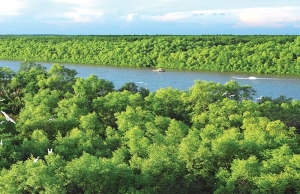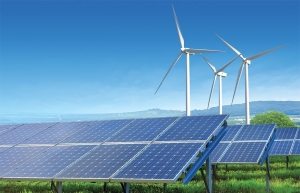How Vietnam can utilise wide-ranging climate finance
As a populous, coastal country with large, low-lying delta regions, Vietnam is among the most vulnerable countries in the world to climate change. By committing to these ambitious targets, Vietnam has set an important example for other countries to emulate, especially developing and middle-income countries. If Vietnam – an exceptionally competitive, dynamic economy – can make this transition to net-zero while maintaining the pace of development progress, it provides a model and opens the door for other countries to do the same.
 |
| Ramla Khalidi - Resident representative United Nations Development Programme in Vietnam |
The government recognises that conversion from fossil fuels can deliver tangible benefits. We now have evidence that the transition to renewable energy will create more jobs than it destroys, although labour market outcomes will be variable in the short to medium term. Countries that manage the transition well will prioritise education, skills upgrading, and social protection programmes to sustain economic growth while promoting equity and boosting investment in less economically favoured regions.
The random distribution of hydrocarbons around the world has created massive geographical imbalances and tensions. Fuel price volatility has been a constant source of macroeconomic instability, for both producing and consuming countries. One of the great benefits of renewable energy, beyond the obvious fact that it is both clean and imperishable, is that it is produced locally and is not subject to the geopolitical winds and uncertainties associated with imported energy sources.
However, even as we recognise these important benefits of the energy transition, we should not underestimate the scale of the challenge facing Vietnam and other countries embarking on the journey to net-zero carbon emissions. Reducing dependence on fossil fuels will affect every sector of the economy, from power generation and agriculture to construction, manufacturing, and transportation.
Much of the discussion over the past year has centred on the financing requirements of achieving a just energy transition. Estimates of the costs vary depending on the assumptions used in making these calculations and, as usual, it is advisable to treat long-term projections with a healthy bit of scepticism.
Nevertheless, conservative estimates suggest that Vietnam will need to mobilise something like an additional $15 billion to 30 billion per year to achieve the net-zero target and sustain rapid economic growth. Although wind and solar have lower operating costs than coal-fired power plants, they are more capital intensive in the initial investment phase.
Electricity grids will also need upgrading to move power from surplus to deficit regions and to balance peaks and troughs in demand. Production methods in industry and agriculture need to be modernised and mass transit systems, e-vehicles, charging stations, and other components of the ecosystem will have to be developed.
The international dimension of climate finance rose to prominence in the context of the 2015 Paris Agreement, and recent climate summits have seen the emergence of just energy transition partnerships and acceptance of the principle of loss and damage funds to provide support to vulnerable countries.
For large and dynamic economies like Vietnam, international financing will at most provide a supplemental source of capital. Most of the investment requirements will have to be met by domestic sources. This is because foreign financing – except for grants but including foreign direct investment – creates foreign liabilities that must be repaid in dollars.
Domestic energy production generates incomes, but usually in the national currency. There is therefore a limit to the amount of foreign capital that developing countries can import through loans and direct investment to finance the energy transition.
Increasing the capacity of the domestic financial system to mobilise long-term capital is the core problem of climate finance. Vietnam’s financial system has grown rapidly during the reform era and is more sophisticated and diverse than it was just a few years ago. However, the absence of deep and liquid secondary markets constrains the availability of long-term financing. As recent events in the bond market have shown, corporate disclosure and accountability are key constraints on the development of active secondary markets.
Looking ahead, proactive policies are needed to remove these and other obstacles to increasing the supply of long-term domestic financing for the energy transition and other uses. Numerous examples can be found in advanced and developing countries of innovative policies to diversify domestic financing sources and to use the government’s balance sheet to stimulate private investment.
 | Action plans for high-income and low-carbon future About $184 billion at current value – that’s the estimate of the potential investment opportunities for the private sector over the next couple of decades to help Vietnam on a climate-resilient and net-zero development pathway. |
 | Vietnam up to the challenge in hitting net-zero targets At COP27 last month, Vietnam took further action to fulfil its net-zero goals by 2050 through a strong energy transition, which has been putting pressure on long-term energy policy revisions to ensure international commitments. |
What the stars mean:
★ Poor ★ ★ Promising ★★★ Good ★★★★ Very good ★★★★★ Exceptional
Related Contents
Latest News
More News
- CME Solar strengthens position in Vietnamese renewables (December 30, 2025 | 11:21)
- Self-care signals shift towards sustainable healthcare (December 30, 2025 | 10:12)
- GreenYellow marks five years of clean energy growth in Vietnam (December 26, 2025 | 15:51)
- TCP Group partner with VNUS to launch water conservation project (December 25, 2025 | 14:00)
- Heavy industries set for pilot greenhouse gas quotas (December 25, 2025 | 10:00)
- Swedfund invests in MSME growth and climate action in Vietnam (December 19, 2025 | 11:42)
- GreenYellow brings solar energy to light up remote schools in Tuyen Quang province (December 19, 2025 | 08:00)
- Charge+, Grab partner to develop EV charging network in Vietnam (December 18, 2025 | 17:11)
- Linking sci-tech and innovation to Vietnam’s net-zero future (December 18, 2025 | 14:31)
- Driving double-digit growth through green and circular transformation in Vietnam (December 17, 2025 | 09:00)

 Tag:
Tag:

















 Mobile Version
Mobile Version